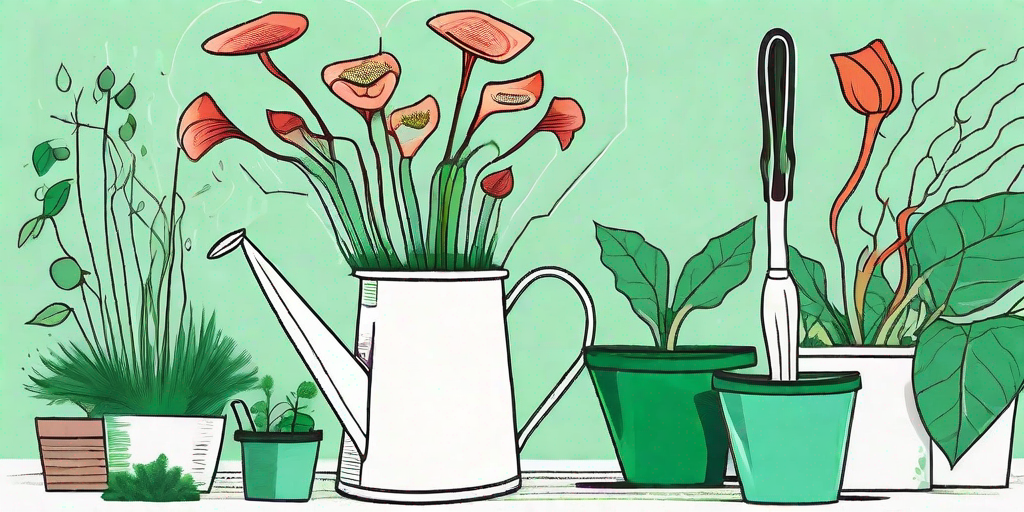
If you've ever dreamed of cultivating your very own carnivorous plant, you're in the right place. Growing pitcher plants from seeds can be a rewarding experience, as long as you're prepared for a bit of a challenge. But don't worry, we're here to guide you through the process, step by step, and with a dash of humor to keep things light. So, let's get started!
Understanding the Pitcher Plant
Before we dive into the nitty-gritty of growing pitcher plants, let's take a moment to appreciate these fascinating creatures. Yes, you read that right, we said creatures. While technically a plant, the pitcher plant's carnivorous nature gives it a certain animalistic charm.
Pitcher plants, or Sarracenia, are native to North America and are known for their unique, jug-like structure that traps and digests insects. These plants thrive in nutrient-poor soil, compensating for the lack of nutrients by consuming insects. Now, isn't that a clever workaround?
The Anatomy of a Pitcher Plant
The pitcher plant's unique structure is a marvel of natural engineering. The 'pitcher' is actually a modified leaf, filled with a digestive liquid. Insects, lured by the plant's sweet nectar, fall into the pitcher and are digested by the liquid. The nutrients are then absorbed by the plant.
But don't worry, your pitcher plant won't be chomping on your fingers. They're strictly insectivores. So, unless you're a bug, you're safe.
How to Grow Pitcher Plant Seeds
Now that we've covered the basics, let's get down to business. Growing pitcher plants from seeds can be a bit tricky, but with a little patience and the right care, you'll be well on your way to cultivating your own carnivorous garden.
Here's a step-by-step guide to help you through the process:
- Obtain the seeds: You can purchase pitcher plant seeds online or from a local nursery. Make sure to choose a reputable source to ensure the seeds are viable.
- Stratify the seeds: Pitcher plant seeds require a period of cold stratification to germinate. This involves placing the seeds in a moist medium and storing them in the refrigerator for about 4-6 weeks.
- Sow the seeds: After stratification, sow the seeds on the surface of a suitable growing medium. Don't bury them, as they need light to germinate.
- Provide the right conditions: Pitcher plants need plenty of light, high humidity, and acidic soil. They also prefer temperatures between 70-95°F (20-35°C).
- Be patient: Pitcher plant seeds can take several weeks to germinate, so don't lose hope if you don't see sprouts right away.
Caring for Your Pitcher Plant
Once your seeds have sprouted, the real fun begins. Caring for your pitcher plant requires a bit of dedication, but the reward is well worth the effort.
Here are some tips to keep your pitcher plant happy and healthy:
- Watering: Pitcher plants love water. Keep the soil consistently moist, but avoid waterlogging. Use distilled water or rainwater, as tap water can contain minerals that are harmful to the plant.
- Feeding: Remember, your pitcher plant is a carnivore. It will catch its own food, so there's no need to feed it. However, if insects are scarce, you can supplement with a small amount of insect-based fertilizer.
- Light: Pitcher plants need plenty of light to thrive. A sunny windowsill or a spot under a grow light is ideal.
- Temperature: Keep your plant in a warm environment. If temperatures drop below 60°F (15°C), consider moving your plant indoors or providing some form of heat.
Frequently Asked Questions
Do pitcher plants need a lot of sunlight?
Yes, pitcher plants thrive in bright, indirect sunlight. However, they can also tolerate lower light conditions, as long as they're not kept in the dark.
Can I grow a pitcher plant indoors?
Absolutely! Pitcher plants can be grown indoors, as long as they're provided with enough light and humidity. A sunny windowsill or a terrarium can make an ideal home for a pitcher plant.
How often should I water my pitcher plant?
Keep the soil consistently moist, but not waterlogged. The frequency of watering will depend on the humidity and temperature of your environment. In hot, dry conditions, you may need to water daily.
Conclusion
There you have it, a comprehensive guide to growing pitcher plants from seeds. With a bit of patience, the right care, and a dash of humor, you'll be well on your way to cultivating your own carnivorous garden. So, what are you waiting for? Unleash your inner green thumb and start growing!















